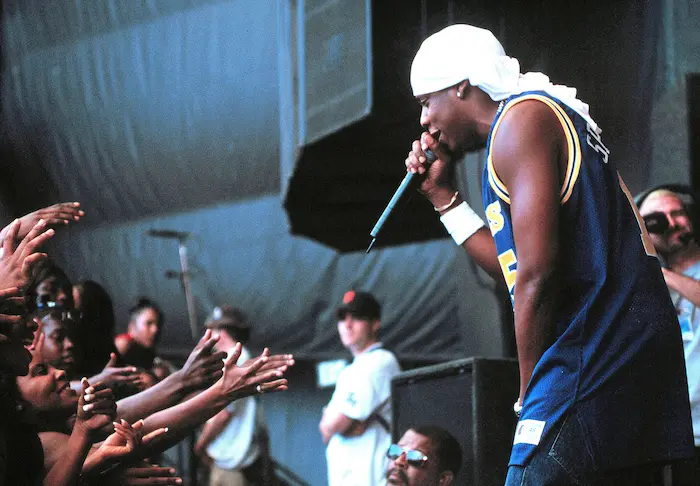Rap music, an integral part of the broader hip-hop culture, has grown into one of the most influential and popular music genres worldwide. But why was rap music created? To understand this, we need to delve into the historical, cultural, and social contexts that gave rise to this dynamic genre. This article explores the origins, purposes, and evolution of rap music, offering a comprehensive view of its creation.
I. Historical Roots
The Birthplace: The Bronx, New York
Rap music originated in the 1970s in the South Bronx, New York City. This area was marked by significant economic decline, social upheaval, and urban decay. The community, predominantly African American and Latino, faced poverty, high crime rates, and inadequate public services. These harsh conditions became the backdrop against which rap music was born.
DJ Kool Herc and the Breakbeat
DJ Kool Herc, a Jamaican immigrant, is often credited with laying the foundation for rap music. In the early 1970s, he began to host block parties where he used two turntables to extend the instrumental breaks of funk, soul, and disco songs. This technique, known as the “breakbeat,” allowed partygoers to dance longer and eventually led to the emergence of “rapping” over these extended breaks.
II. Cultural Influences
African and Caribbean Traditions
Rap music draws heavily from African oral traditions and Caribbean music styles. The African griots, or storytellers, would use rhythm and poetry to convey stories and history. Similarly, Jamaican toasting, where DJs would speak rhythmically over music, directly influenced early rap. These cultural practices emphasized rhythm, storytelling, and community, all of which are central to rap music.
Graffiti, Breakdancing, and Hip-Hop Culture
Rap music is one element of the broader hip-hop culture, which also includes graffiti art, breakdancing, and DJing. This culture emerged as a form of expression and resistance for marginalized youth in the Bronx. It provided an outlet for creativity, identity, and community building. The synergy between these elements helped solidify rap music’s place within the hip-hop movement.
III. Social and Political Context
A Voice for the Marginalized
Rap music was created as a response to the social and economic conditions of the 1970s and 1980s. For many young African Americans and Latinos, it became a powerful means of expressing their frustrations, aspirations, and experiences. The lyrics often addressed issues such as poverty, racism, police brutality, and urban life. Rap gave a voice to those who were often ignored or silenced by mainstream society.
Public Enemy and Political Rap
In the 1980s, groups like Public Enemy brought political consciousness to the forefront of rap music. Their lyrics were confrontational and focused on social justice issues, challenging the status quo and inspiring activism. This era of rap music highlighted the genre’s potential as a tool for political and social change.
IV. Economic Factors
The Music Industry and Commercialization
As rap music gained popularity, the music industry began to recognize its commercial potential. Record labels started signing rap artists, leading to the genre’s commercialization. While this brought financial success and mainstream recognition to many artists, it also led to debates about authenticity and the influence of corporate interests on the genre.
Entrepreneurship and Innovation
Rap music also fostered a spirit of entrepreneurship among artists. Figures like Russell Simmons and Sean “Diddy” Combs not only succeeded as performers but also built empires around their music. This entrepreneurial aspect has been a driving force in the evolution and proliferation of rap music.
V. Technological Advances
The Role of Technology in Production
Advances in technology have played a crucial role in the creation and evolution of rap music. The availability of affordable recording equipment and software has democratized music production, allowing more artists to create and distribute their music independently. Sampling technology, in particular, has been instrumental in the development of rap music, enabling artists to incorporate diverse sounds and influences into their work.
The Internet and Social Media
The rise of the internet and social media has further transformed the rap music landscape. Platforms like YouTube, SoundCloud, and Instagram have given artists new ways to share their music, reach audiences, and build fanbases. This digital revolution has lowered barriers to entry and fostered a more diverse and dynamic rap scene.
VI. Cultural Impact and Globalization
Rap as a Global Phenomenon
What started in the Bronx has now become a global phenomenon. Rap music has transcended cultural and geographic boundaries, influencing and being influenced by various cultures worldwide. From the UK grime scene to Korean K-pop rap, the genre’s adaptability and universal appeal have made it a global cultural force.
Cultural Exchange and Fusion
The globalization of rap music has led to a rich exchange of cultural influences. Artists from different backgrounds bring their unique perspectives and styles, creating a vibrant and evolving genre. This fusion of cultures within rap music continues to push its boundaries and expand its reach.
See Also: Can You Tell Where Rap Music Is From by the Beat?
VII. Conclusion
Rap music was created out of necessity and ingenuity. It emerged from the socio-economic struggles of the Bronx, drawing from rich cultural traditions and responding to the needs and voices of marginalized communities. Over time, rap has evolved into a global phenomenon, driven by technological advances, commercial interests, and cultural exchanges. Its origins are rooted in resistance and expression, and it continues to be a powerful medium for storytelling, activism, and artistic innovation. As rap music grows and changes, it remains a testament to the resilience and creativity of those who pioneered and continue to shape this influential genre.

